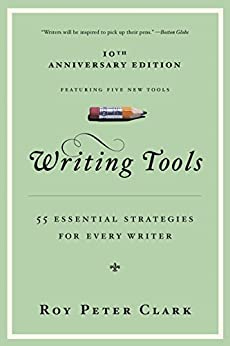The “four pieces” process for more compelling writing
A quick and simple tip to make your readers want to keep reading
In “Iconic movie trailers, explained by a trailer editor,” Bill Neil shares this wisdom he received from studio executive Tony Sella:
Making a movie trailer is “like trying to sell a jigsaw puzzle. And, in order to sell the jigsaw puzzle, you can't show the whole picture on the box. You are only allowed to show four pieces of that puzzle.”
When I heard that, I immediately thought of social media, a necessary task for writers today that many struggle with (myself included).
What if we considered our social media posts as “only showing four pieces” of what we ultimately want our readers to do?
Compel them to click the link to your latest post—without giving away the central idea of your post. (Ever notice how many article titles are questions? Our brains want to close that loop so we’ll click, even if we’re not entirely interested.)
Persuade them to buy your book—without ever using the words buy my book.
Entice them to your email signup. (Sidenote: if you’re an author without an email newsletter, start one today. I recommend Substack. If there’s interest, maybe a future newsletter here can cover ideas for your own newsletter.)
Weave a little mystery into your social media so that your audience feels compelled to find the solution.
I plan to start using that as my framework for future posts on Twitter and LinkedIn.
That said, social media isn’t what I want to focus on today.
But the quote still applies.
How can we take the “four pieces” process and apply it to our writing?
Regardless of your take on Malcolm Gladwell, he’s sold millions of books and has introduced arguments into popular culture that are now well-known, e.g., it takes 10,000 hours to achieve expertise.
Adam Grant (himself a best-selling author) once wrote:
“Why is [Gladwell] arguably the most spellbinding nonfiction writer of our time? The most popular explanation was storytelling skills: he’s a master of suspense, to the point that his books read like mystery novels.”
Maybe we should be reading more suspense novels.
Here’s a simple tip to try for more compelling writing, and it’s an edit I’ve often made in others’ online articles.
If your opening section contains your thesis statement or strongest argument, remove it.
Such a statement may have been helpful and necessary in your first draft, but you can likely create a more compelling read by withholding the crux of your article until the end.
Once you remove your thesis, revise your article with an eye toward drawing the reader along to your conclusion.
This image may help: as your reader journeys through your forest of words, lead them to a clearing in which a lone house stands with a fresh pie sitting on a windowsill awaiting their arrival.
In other words, ask yourself how you can compel them from one sentence to the next, from one paragraph to the next, from one section to the next.
What if you considered each section as if it were a book chapter with a cliffhanger ending?
What if each section were a piece of the puzzle you want the reader to put together by the end?
Because when a reader reaches that aha moment, they’ll remember the guide who led them there.
More writing help
Weekly writing book recommendation
Roy Peter Clark’s Writing Tools: 55 Essential Strategies for Every Writer is a must-have guide for new writers and a helpful reminder for experienced writers. Each short chapter is practical and immediately applicable.
Need editing, writing, or publishing help?
I take on clients on a very limited basis. However, if I’m unable to help for any reason, I do my best to refer you to trusted writing professionals (many of whom I call friends).
So let me know what you’re working on if you want to take that next step.




